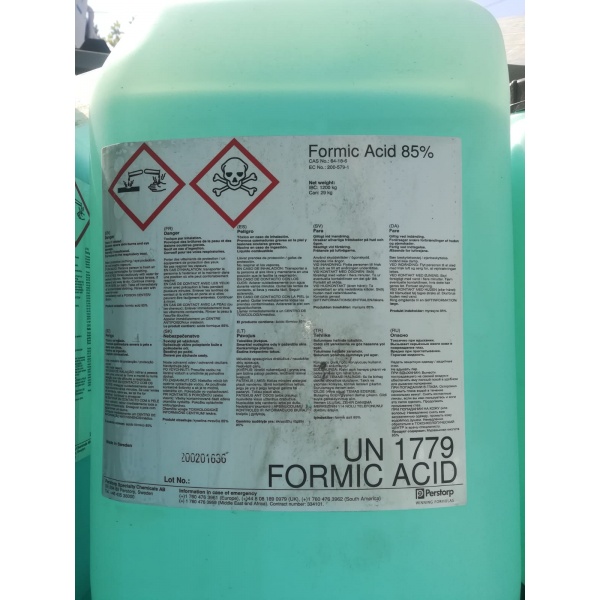FORMIC ACID EUROPE
1.20 $
-
$ USD
FORMIC ACID
Cas no: 64-18-6
EINECS No 200-579-1
Molecular Weight 46,0254 g / mol
Chemical Formula CH2Cl2
density 1.22 g / ml (liquid)
Acidity (pKa) 3.75
Melting point 8.4 ° C
Boiling point 249.2
Flash Point 121.5
View Colorless
EXPLANATION
General information: Formic acid, known in methanoic acid, belongs to a single carbon carboxylic. It has both carboxylic acid and aldehyde properties. It dissolves very well in solvents such as ether, water, acetone, ethanol and metonal. This acid, also known as ant acid, is also secreted from the acid hole in the back of ants, produced in poison glands. In nature, it was first encountered in ant secretions and this is the first way obtained. It has a concentration of 85% and is flammable. Besides, it is low toxicity. The most basic use of formic acid is a protective and antibacterial agent in animal feed. When sprayed on fresh straw, it stops some rotting processes and allows the feed to retain its nutritional value longer. For this reason, it is widely used to protect the winter feed for cattle. In the poultry industry, it is sometimes added to feed to kill salmonella bacteria. Other uses: Used to process organic latex (handle) into raw rubber. Beekeepers use formic acid as a miticide against varroa mite. It has little importance in the textile industry and for tanning leather. Some format esters are artificial sweeteners or perfumes. It is an active ingredient of some household descaling brands. In the laboratory, formic acid is also used as a source for carbon monoxide, which is released with the addition of sulfuric acid. Formic acid is also a source for a formyl group, for example, in the formulation of methylaniline in toluene to N-methylformanilide. Fuel cells using modified formic acid are promising.


